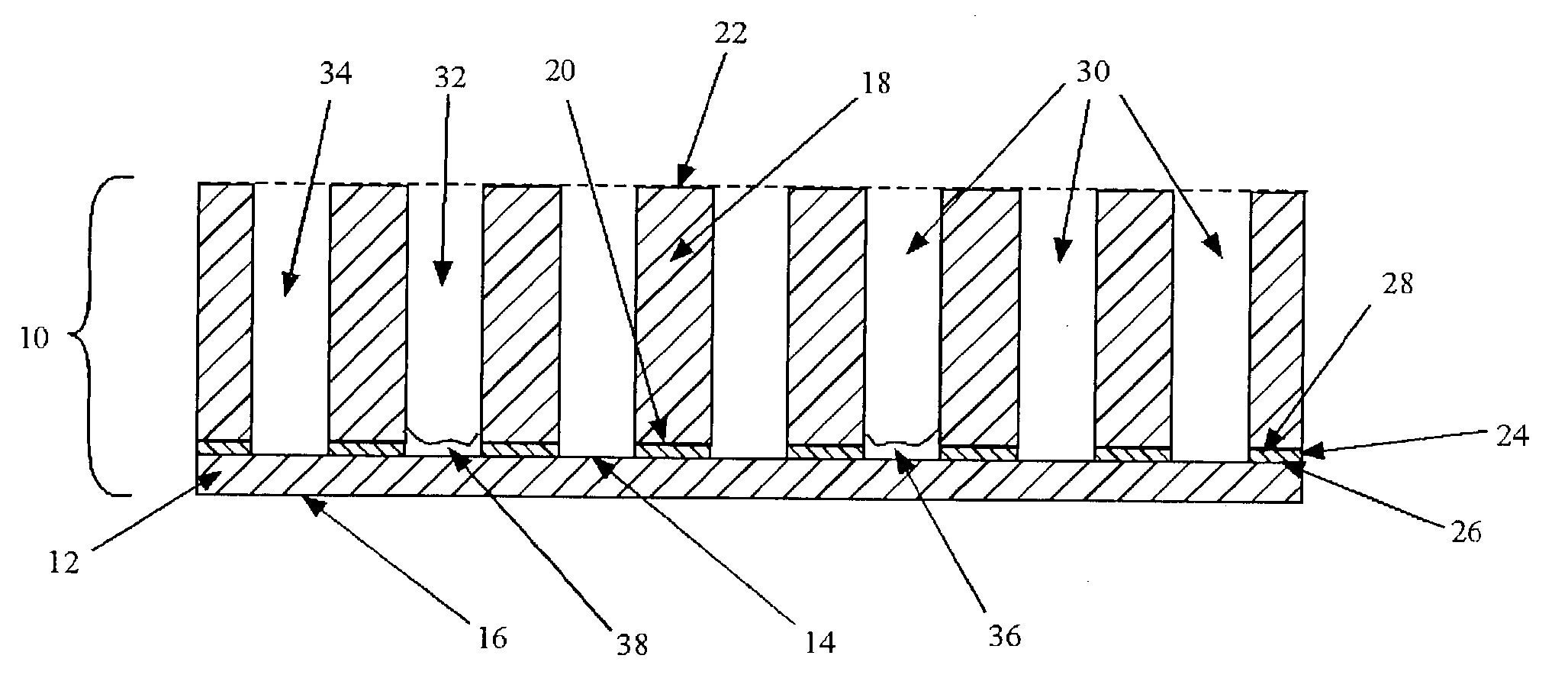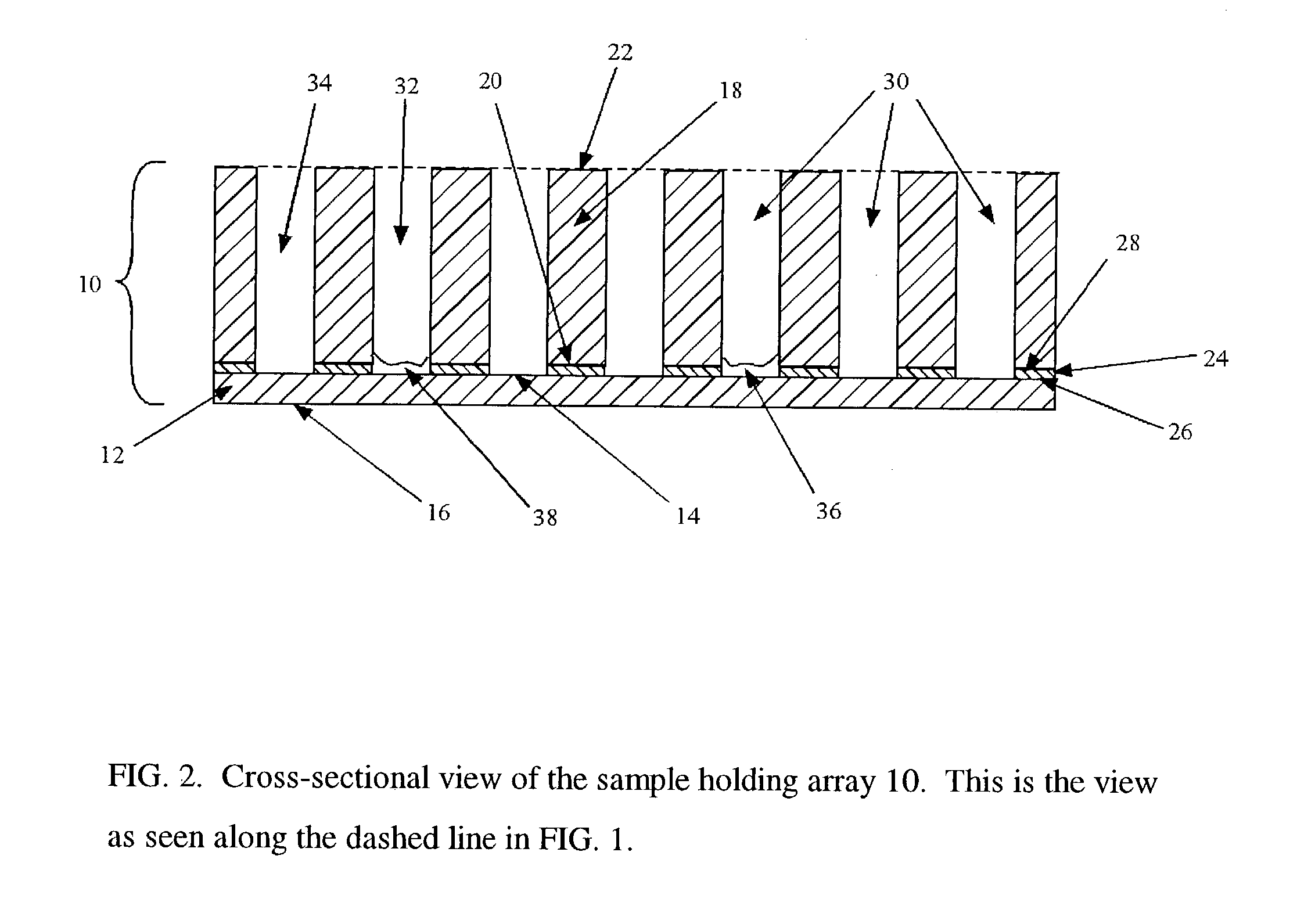Transmission infrared spectroscopy array and method
a technology of infrared spectroscopy and arrays, applied in the field of combinatorial chemistry reaction tools, can solve problems such as frequency distortion of band shapes, phase or amplitude modulation of photoacoustic ftir spectroscopy, and difficulty in interpretation of signals produced
- Summary
- Abstract
- Description
- Claims
- Application Information
AI Technical Summary
Benefits of technology
Problems solved by technology
Method used
Image
Examples
example 2
[0057] Polymer Deposition Into the Cavities of the Sample Holding Device
[0058] The purpose of this example is to illustrate the preparation of polymer samples for analysis using the sample holding array and method of the invention. The samples can be prepared using a commercial high throughput polymer catalyst screening system for sample preparation such as described in U.S. Pat. No. 6,306,658. The reactors used in these systems are typically used for homogeneous and heterogeneous polymerization catalyst screening reactions. Post-reaction samples containing solvent and polymer are then transferred to a rotary evaporator to remove the solvent and any volatiles. The library of polymer samples is weighed robotically.
[0059] Ethylene / l-octene samples prepared are dissolved in 1,2,4-trichlorobenzene stabilized with 2,6-di-tert-butyl-4-methylphenol(B-HT) (0.18 mg / ml) at 150.degree. C. to a concentration of 30 mg / mL using a liquid handling robot and mechanically shaken to completely dissolv...
example 3
[0060] Analysis of Ethylene / 1-Octene Copolymer Composition and Density
[0061] A series of 26 ethylene / 1-octene copolymer samples were selected for the calibration of the FTIR method using the sample holding array. The actual 1-octene mole percentage incorporation values were obtained from .sup.13C NMR spectroscopy and spanned a range from 0 to 17 mole percent 1-octene. Actual densities were obtained using the standard ASTM method. A direct least square curve fitting procedure using the first derivative of the 1377 cm.sup.-1 peak area normalized to the first derivative of the 1473 peak area was used for the calibration curve. Samples used in the calibration curve were prepared either via homogeneous or heterogeneous catalysts under both batch and continuous conditions. Five ethylene / 1-octene copolymers were then chosen to validate the predictive capability of the model using the sample holding array of the invention. The results of these samples are shown below.
1 Actual Predicted EO 1...
PUM
| Property | Measurement | Unit |
|---|---|---|
| Angle | aaaaa | aaaaa |
| Fraction | aaaaa | aaaaa |
| Fraction | aaaaa | aaaaa |
Abstract
Description
Claims
Application Information
 Login to View More
Login to View More - R&D
- Intellectual Property
- Life Sciences
- Materials
- Tech Scout
- Unparalleled Data Quality
- Higher Quality Content
- 60% Fewer Hallucinations
Browse by: Latest US Patents, China's latest patents, Technical Efficacy Thesaurus, Application Domain, Technology Topic, Popular Technical Reports.
© 2025 PatSnap. All rights reserved.Legal|Privacy policy|Modern Slavery Act Transparency Statement|Sitemap|About US| Contact US: help@patsnap.com



